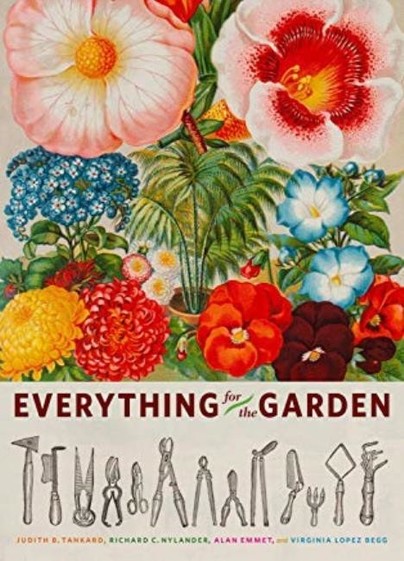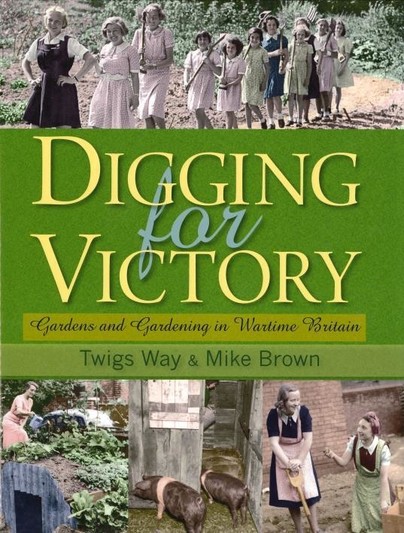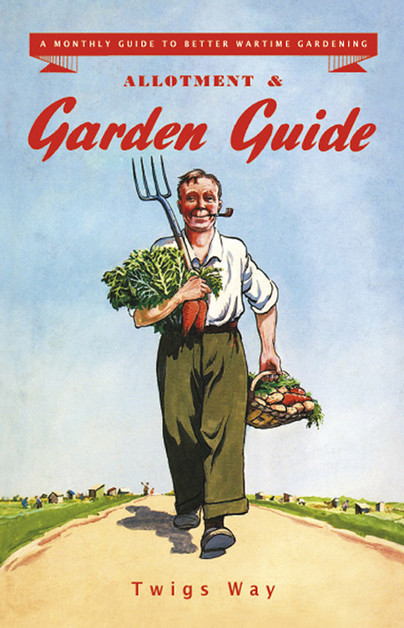Natural World / Garden History & Gardening

Format: Paperback
Pages: 144
ISBN: 9780989059848
Pub Date: 01 Sep 2019
Description:
Everything for the Garden is for anyone who enjoys gardening at home, visiting historic landscapes, or admiring plants and flowers in art and culture. Colorfully illustrated by material from Historic New England’s extensive collection, the book celebrates the objects and literature that people used to make and enjoy gardens from the mid-nineteenth century to today. Essays by well-known experts include Virginia Lopez Begg on garden clubs and horticultural societies, Alan Emmet on garden portraits, Richard Nylander on a cornucopia of catalogues and on garden architecture and ornament, and Judith Tankard on designing and making the garden.

Format: Hardback
Pages: 80
ISBN: 9782840483342
Pub Date: 19 Jan 2013
Description:
Reconstructing a medieval garden is part of the concerns of the modern man conscious of biodiversity, the environment and the balance of nature. Plant biodiversity is not confined to the maintenance of species currently cultivated, it consists of reintroducing plants formerly grown and long forgotten, as well as allowing plants, which are considered wild. The links between the environment control that are our gardens and the wild nature are necessary for the accomodation of helpful fauna.
It was so in the gardens of yesteryear where vegetables, herbs and condiments, and flowers were close and mixed. The medieval garden is the epitome of early eco-gardening. In the Middle Ages, the work of the earth was a fight against hunger but, little by little, man discovered the pleasure of living in nature and expressed this in one of the most famous texts in French literature, The Novel of the Rose. The medieval garden, closed space, gradually becomes a place of delight. They cultivated the garden with love, ate vegetables that they grew themselves, decorated its interior with cut flowers and found a sort of lost paradise.French Language

Format: Hardback
Pages: 216
ISBN: 9780955272370
Pub Date: 10 Oct 2010
Illustrations: colour throughout
Description:
Beans as bullets', 'Vegetables for Victory' and 'Cloches against Hitler': these slogans convey just how vital gardening and growing food were to the British war effort during the Second World War. Exhorted to 'Grow More Food', then to 'Dig for Victory', Britain's 'allotment army' was soon out in force, growing as many vegetables as possible in suburban allotments, private gardens, even the grounds of stately homes. Richly illustrated with contemporary photographs and ephemera relating to the 'Dig For Victory' campaign, this expertly researched, highly engaging and informative account also includes archive images of home front gardening, garden produce and advertisements.

Format: Hardback
Pages: 160
ISBN: 9780955272356
Pub Date: 01 Dec 2009
Illustrations: colour throughout
Description:
Produced by the Ministry of Agriculture, the "Allotment and Garden Guides" were issued monthly throughout 1945. Aimed at the amateur gardener, they were to be the final rallying call in the wartime campaign to Dig for Victory. Concentrating on the productive garden, the guides were designed to take the amateur gardener through the basic tasks of each month.
Many of the subjects tackled are as relevant now as they were then. How to make a compost heap, when to sow marrow seed, which seeds are they easiest to save, are still popular topics in the modern gardening media. However, other subjects convey the war-time difficulties: seed shortages due to enemy occupation in Europe, regulations on flower growing, and the very real prospect of running out of food next winter. Packed with additional photographs and illustrations, Twigs Way gives an historical overview to gardening during the Second world war and comments on each month of the guide. Many people still work allotment or vegetable plots that were first established during the war years, 'inheriting' them from a generation that used these guides as their gardening bibles. To read the Guides now is to experience a sense of both the urgency of the war-time garden, and the timelessness of the processes of gardening.




